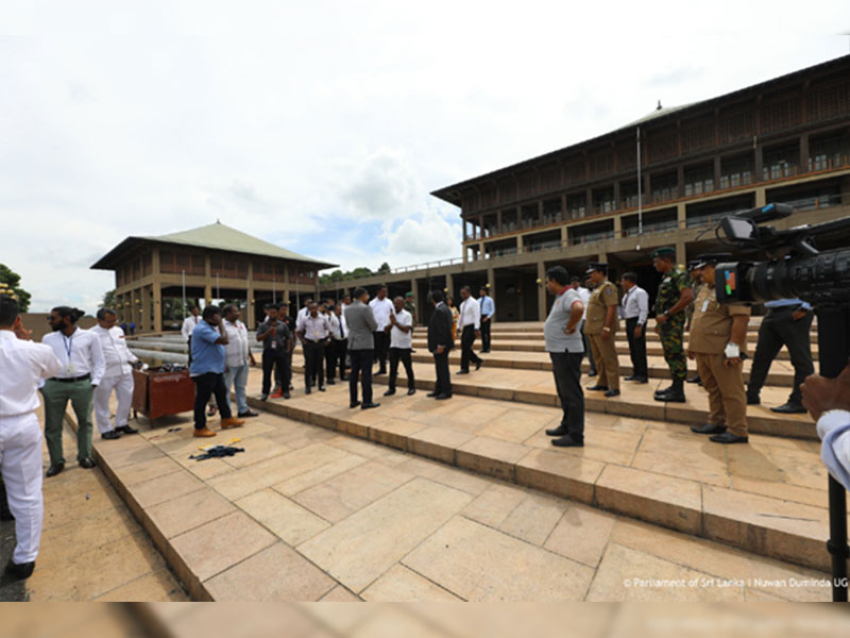Search crews racing to relocate underwater signals that officials hunting for the missing Malaysia jet said were consistent with a plane’s black boxes have found nothing, the head of the search effort said Tuesday, and time may have already run out to find the battery-powered devices.
Angus Houston, the retired Australian air chief marshal who is heading the search far off Australia’s west coast, said sound locating equipment on board the Ocean Shield has picked up no trace of the signals since they were first heard late Saturday and early Sunday. The signals had sparked hopes of a breakthrough in the search for Flight 370.
Finding the black boxes quickly is critical, because their locator beacons have a battery life of only about a month and Tuesday marks exactly one month since the plane vanished. Once the beacons blink off, locating the black boxes in such deep water would be an immensely difficult, if not impossible, task.
“There have been no further contacts with any transmission and we need to continue (searching) for several days right up to the point at which there’s absolutely no doubt that the batteries will have expired,” Houston said.
If, by that point, the U.S. Navy listening equipment being towed behind the Ocean Shield has failed to pick up any signals, a sub on board the ship will be deployed to try and chart out any debris on the sea floor. If the sub maps out a debris field, the crew will replace its sonar system with a camera unit to photograph any wreckage.
The towed pinger locator detected late Saturday and early Sunday two distinct, long—lasting sounds underwater that are consistent with the pings from an aircraft’s black boxes the flight data and cockpit voice recorders, Houston said.
“This is the most positive lead, and rest assured we are pursuing it very vigorously,” Defense Minister David Johnston said.
Still, officials warned it could take days to determine whether the sounds were connected to the missing plane, which vanished March 8 on a flight from Kuala Lumpur, Malaysia, to Beijing with 239 on board.
“This is an herculean task it’s over a very, very wide area, the water is extremely deep,” Johnston said. “We have at least several days of intense action ahead of us.”
“It’s literally crawling at the bottom of the ocean so it’s going to take a long, long time,” Houston said.
Finding the black boxes is key to unraveling what happened to the Boeing 777, because they contain flight data and cockpit voice recordings that could explain why the plane veered so far off—course.
“Everyone’s anxious about the life of the batteries on the black box flight recorders,” said Truss, who is acting prime minister while Tony Abbott is overseas. “Sometimes they go on for many, many weeks longer than they’re mandated to operate for we hope that’ll be the case in this instance. But clearly there is an aura of urgency about the investigation.”
The first sound picked up by the equipment on board the Ocean Shield lasted two hours and 20 minutes before it was lost, Houston said. The ship then turned around and picked up a signal again this time recording two distinct “pinger returns” that lasted 13 minutes. That would be consistent with transmissions from both the flight data recorder and the cockpit voice recorder.
The black boxes normally emit a frequency of 37.5 kilohertz, and the signals picked up by the Ocean Shield were both 33.3 kilohertz, U.S. Navy Capt. Mark Matthews said. But the manufacturer indicated the frequency of black boxes can drift in older equipment.
The Ocean Shield is dragging a ping locator at a depth of 3 kilometers (1.9 miles). It is designed to detect signals at a range of 1.8 kilometers (1.12 miles), meaning it would need to be almost on top of the recorders to detect them if they were on the ocean floor, which is about 4.5 kilometers (2.8 miles) deep.
Meanwhile, the search for any trace of the plane on the ocean’s surface continued Tuesday. Up to 14 planes and as many ships were focusing on a single search area covering 77, 580 square kilometers (29,954 square miles) of ocean, 2,270 kilometers (1,400 miles) northwest of the Australian west coast city of Perth, with good weather predicted, said the Joint Agency Coordination Center, which is overseeing the operation.




















